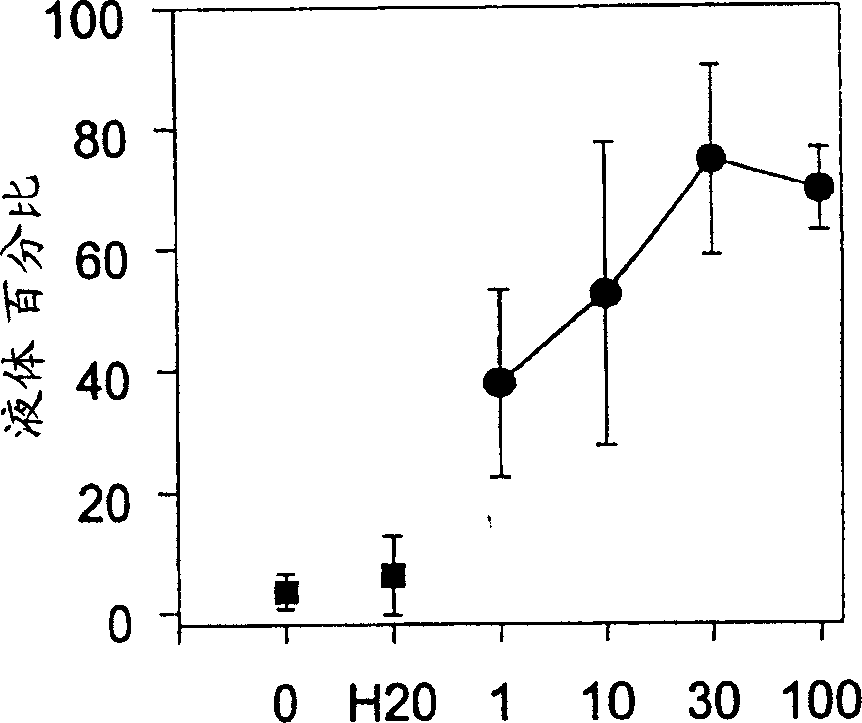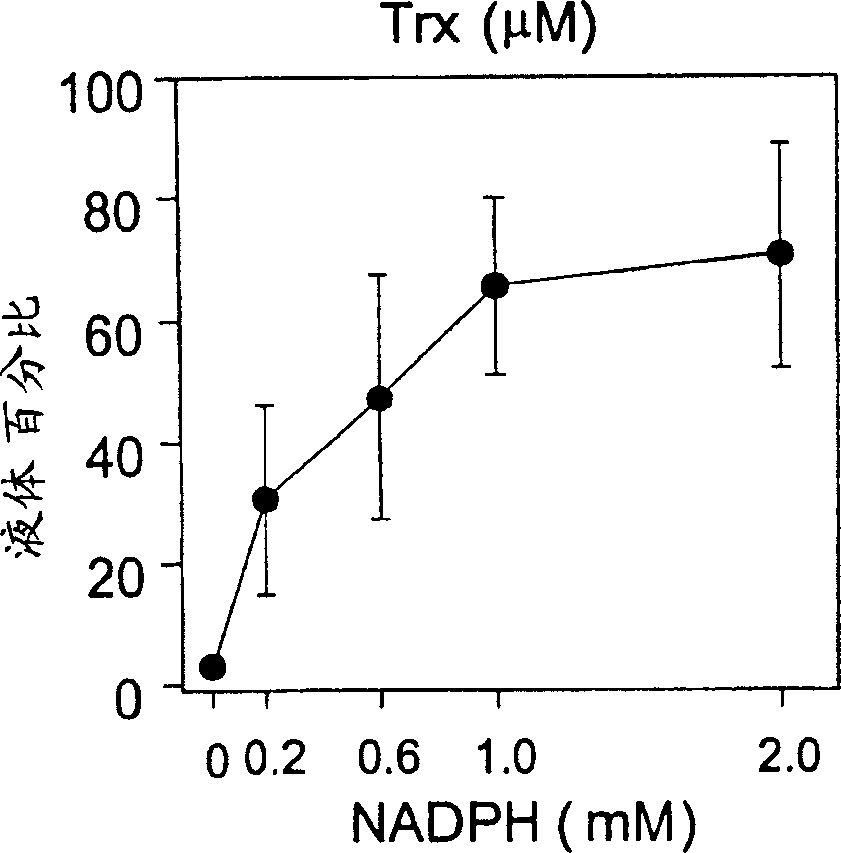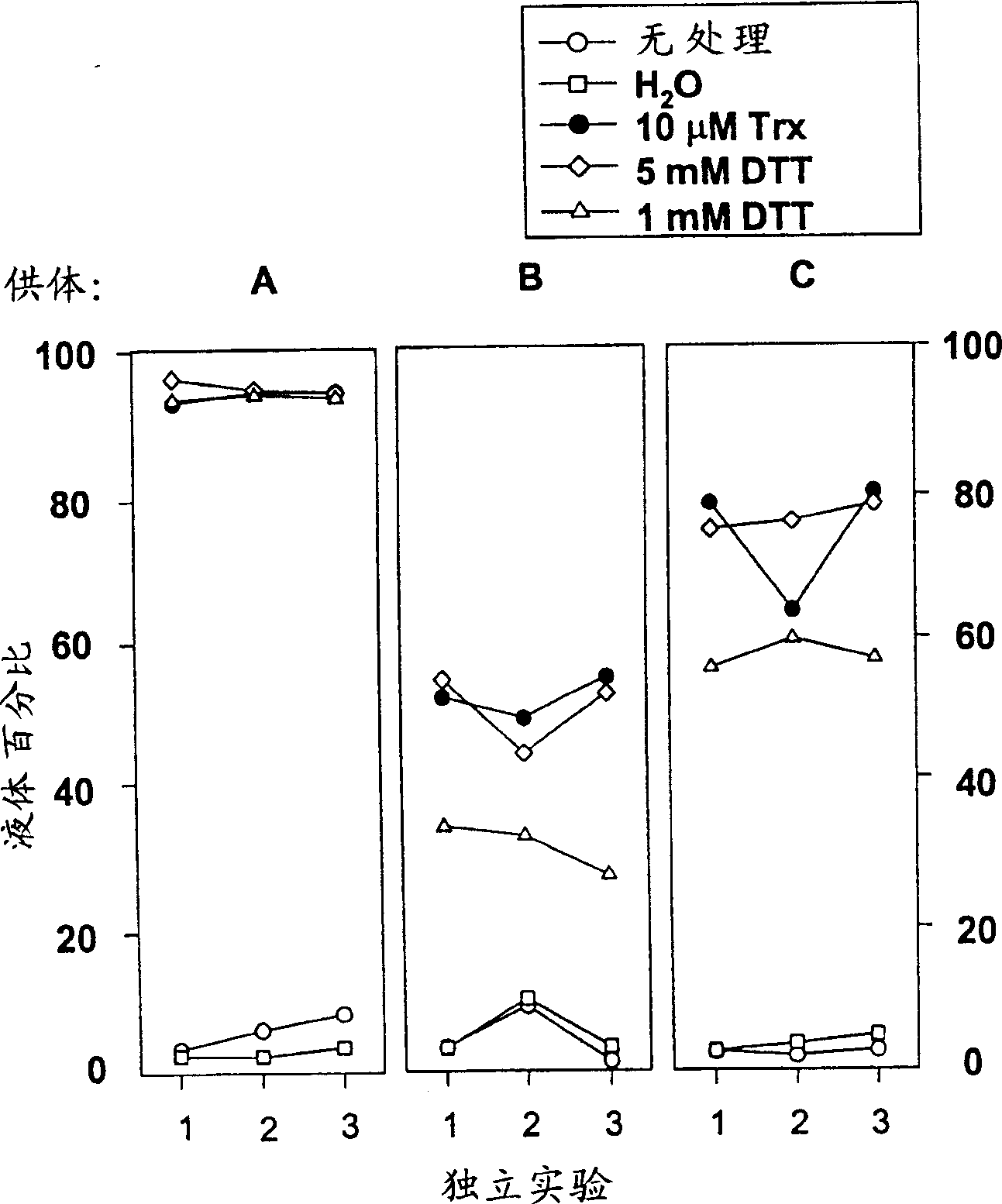Mucolytic and anti-elastase compounds and methods of use thereof
A technique for mucus and sputum, applied in the field of protein or peptide induction, can solve the problem of unrealizable correction of CF
- Summary
- Abstract
- Description
- Claims
- Application Information
AI Technical Summary
Problems solved by technology
Method used
Image
Examples
Embodiment 1
[0118] The following examples describe the effect of the Trx reduction system on fluid release from CF sputum.
[0119] Airway secretions in CF patients are often dry due to abnormal ion transport caused by defects in the CFTR gene. As a result, purulent CF sputum consists primarily of a stiff and non-flowing biopolymer matrix, commonly referred to as a gel phase, and contains a lesser amount of a soluble liquid phase. To assess the effect of Trx on the ratio of these two phases in sputum, compression assays were performed. In the first experiment, 25 μl H containing 0, 1, 10 or 30 μM Trx; 0.1 μM TR; and 2 mM NADPH (final concentration) was used 2 O Process equal volumes of sputum samples. After 20 minutes of incubation, the liquid fraction of each sample was determined by compression experiments.
[0120] The mean (+SD) percentage of CF sputum present in the liquid phase prior to exposure to Trx was 3.5 ± 2.9% ( Figure 1A ; Values from 5 independent experiments. relati...
Embodiment 2
[0123] The following examples show the repeatability of the compression experiments of Example 1.
[0124] To assess the reproducibility of the compression assay, sputum samples from three different CF donors were aliquoted and frozen. Specifically, freshly isolated CF sputum from three different donors (A, B, C) was divided into 275 μl aliquots and frozen. After thawing, it will be 2 The aliquots were incubated for 20 minutes with O, 10 μM Trx (+0.1 μM TR and 2 mM NADPH), or with dithiothreitol (DTT, 1 or 5 mM) and percent liquid was determined by compression experiments. Results obtained from three independent experiments performed on each donor sample were used to assess experimental reproducibility. On three consecutive days, aliquots were thawed and treated with water, Trx and its reducing system, dithiothreitol (DTT), or no treatment.
[0125] like figure 2 shown, from no added substance or added diluent (H 2 O) The liquid fraction of an aliquot of treated Donor A ...
Embodiment 3
[0127] The following examples show that Trx is a more effective sputum liquefying agent than glutathione or N-acetylcysteine.
[0128] The effectiveness of Trx in liquefied sputum was compared with other mono- and dithiol reducing agents. Sputum samples were aliquoted and treated with Trx or GSH for 20 min, and the percent liquid was determined by compression experiments. The first compression test compared the efficacy of the Trx and GSH reduction systems in liquefaction of sputum in the presence of equimolar concentrations of NADPH. There was a progressively significant increase in the percentage of liquid fraction in sputum treated with 10, 30, or 60 μM Trx compared to controls (no supplement) ( Figure 3A ). In contrast, no significant increase in the liquid fraction of sputum was observed after exposure to GSH at equal or up to 1 mM concentrations. In independent studies, the use of N-acetylcysteine ( Figure 3B ) is also less effective than Trx for causing sputum l...
PUM
 Login to View More
Login to View More Abstract
Description
Claims
Application Information
 Login to View More
Login to View More - R&D
- Intellectual Property
- Life Sciences
- Materials
- Tech Scout
- Unparalleled Data Quality
- Higher Quality Content
- 60% Fewer Hallucinations
Browse by: Latest US Patents, China's latest patents, Technical Efficacy Thesaurus, Application Domain, Technology Topic, Popular Technical Reports.
© 2025 PatSnap. All rights reserved.Legal|Privacy policy|Modern Slavery Act Transparency Statement|Sitemap|About US| Contact US: help@patsnap.com



